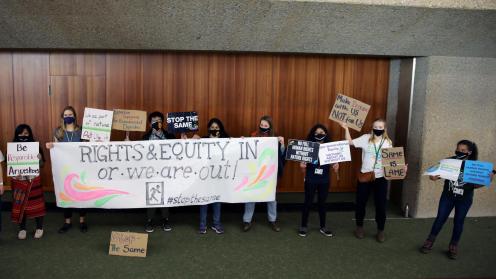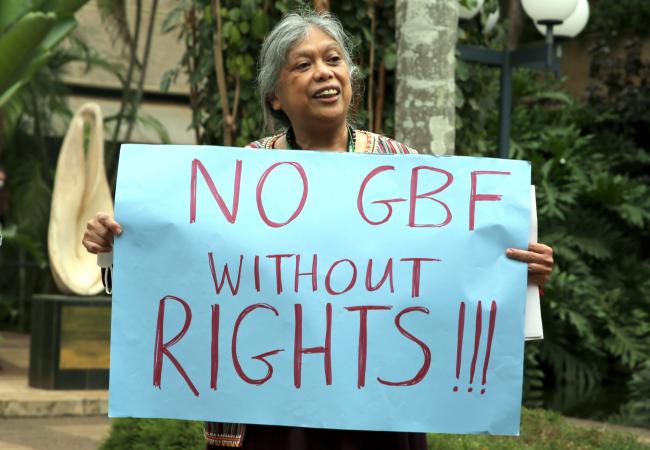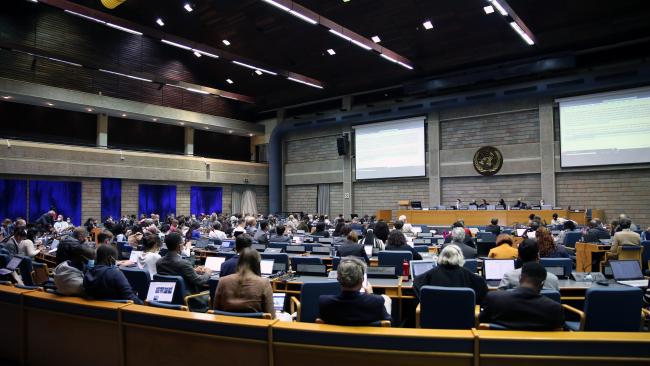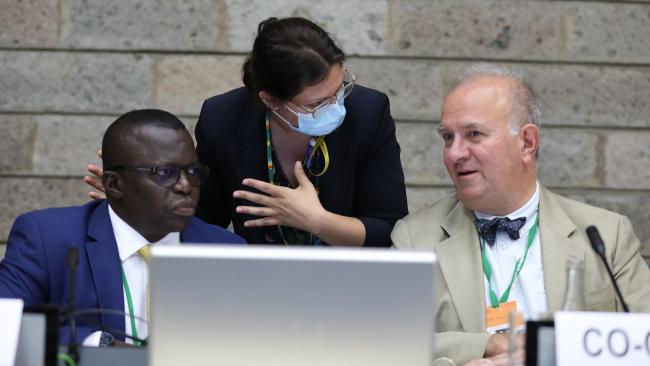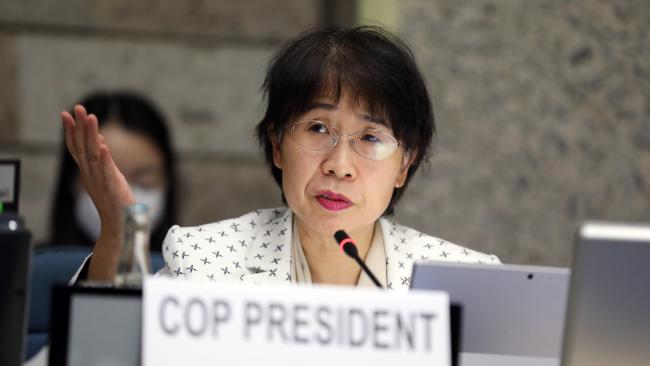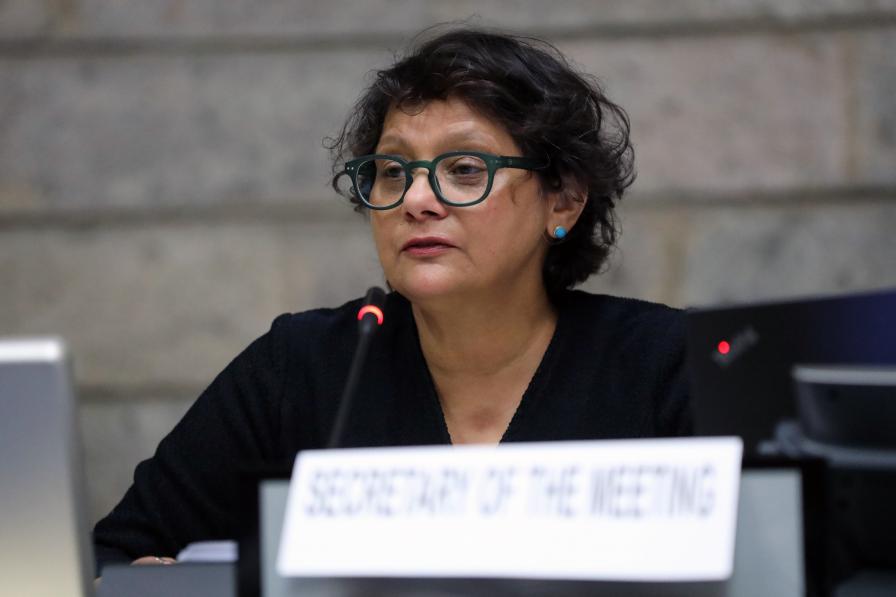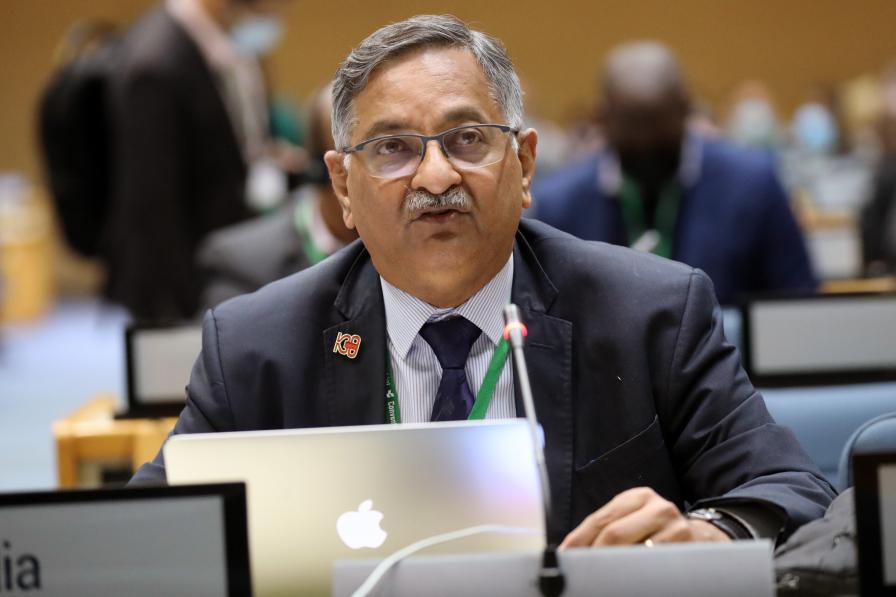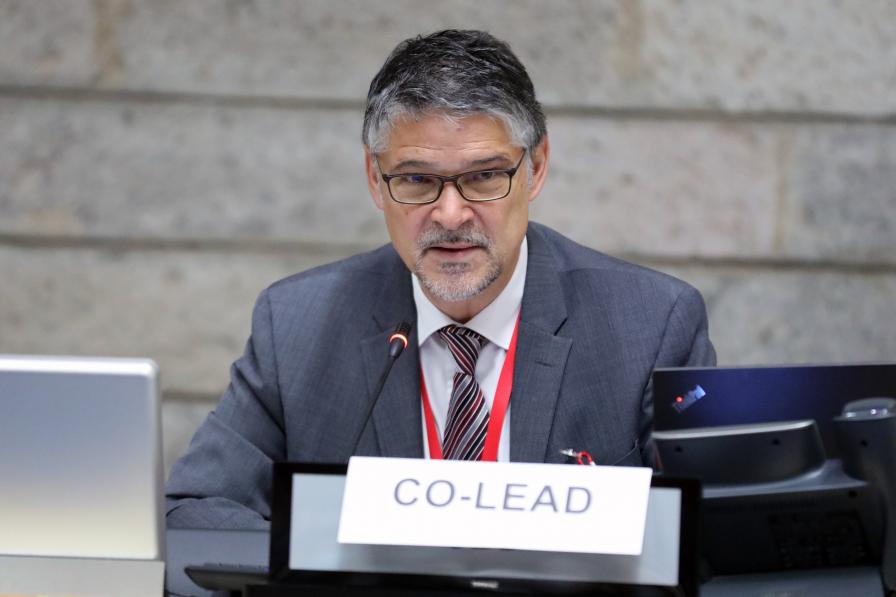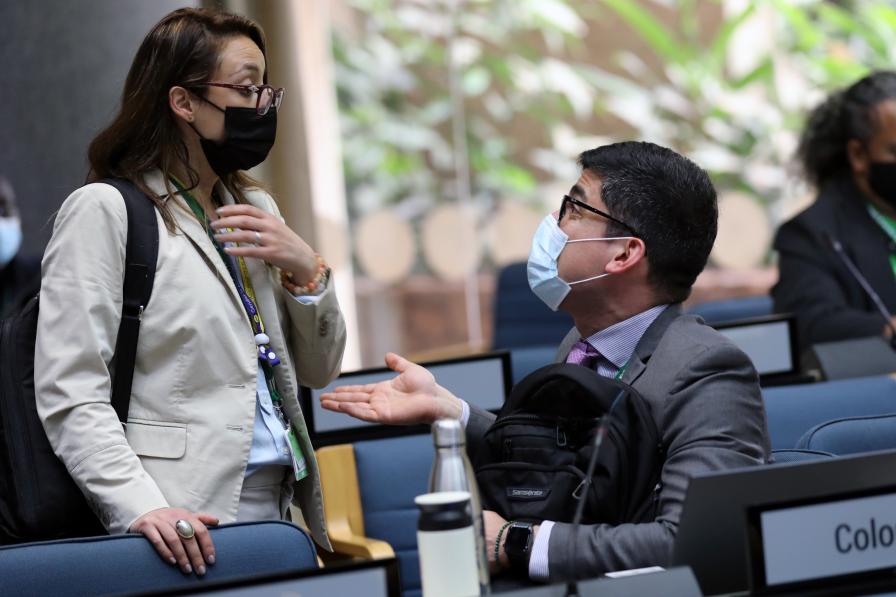The plenary stocktake on Friday was a moment of reckoning for the Working Group on the Post-2020 Global Biodiversity Framework (WG2020). Delegates resuming negotiations of the post-2020 global biodiversity framework (GBF) had many options to consider on the way forward for the WG2020, including whether to: speed up work at the expense of quality; carry out intersessional work; or entrust all pending work to the 15th meeting of the Conference of the Parties to the Convention on Biological Diversity (CBD COP15). In addition to the afternoon stocktaking plenary, delegates convened in contact groups and meetings of "friends of the co-leads" groups throughout the day.
Contact Group 1 on GBF goals resumed for its final deliberation under the guidance of co-leads Vinod Mathur (India) and Norbert Bärlocher (Switzerland). On Goal A on ecosystems, delegates considered new text on halting human-driven extinction of all species and reducing extinction risk. Parties differed on the term “human-driven,” with those opposed arguing it may provide an alibi for some to attribute most extinctions to natural causes. On Goal B on conservation and sustainable use, some parties emphasized the need to avoid controversial terminology such as ecological footprints and ecological boundaries. Others, expressed flexibility so long as these terms are adequately defined in the glossary.
Contact Group 3, co-led by Gabriele Obermayr (Austria) and Gillian Guthrie (Jamaica), continued discussions on targets related to meeting people’s needs through sustainable use and benefit sharing. The group addressed Target 9 on management and sustainable use of wild species, without reaching consensus. Main contentious points include references to: promoting the development of sustainable biodiversity-based products; the sustainable management of landscapes and seascapes; and the provision of social, economic, and environmental benefits for all people.
Delegates further debated: whether the sustainable management and use of wild species should be consistent with relevant national laws and in harmony with international commitments; and whether the livelihoods and customary sustainable use by Indigenous Peoples and local communities (IPLCs) should be ensured, protected, promoted, safeguarded, or a combination of the above.
A lengthy discussion took place on Target 10 on ensuring the sustainable management of areas under agriculture, aquaculture, fisheries, forestry, and other productive uses. Many additional elements have been added to the target, which largely remain bracketed as consensus could not be reached. On Target 13 on access and benefit sharing, the group heard the result of the friends of the co-leads group deliberations, which came up with a single formulation of the target following discussions on three alternatives. Further work is needed as a considerable amount of brackets remain in the text on issues where convergence was not feasible.
Target 11 on regulating services provided by ecosystems and nature raised disagreements, including regarding references to nature’s contributions to people, soil health, payments for environmental services, and nature-based solutions and ecosystem-based approaches. Delegates were able to reach agreement on Target 12 on green and blue spaces in urban and densely populated areas, improving human health and wellbeing.
In the afternoon, delegates gathered for a plenary session, which took stock of progress on negotiations of the GBF and digital sequence information (DSI), and to carry out a first reading of the draft decision operationalizing the GBF for COP15. Contact group co-leads presented on progress, reporting on areas of contention and noting the need for intersessional work.
WG2020 Co-Chairs Basile van Havre (Canada) and Francis Ogwal (Uganda) illustrated progress on the GBF using color-coded tables and graphs representing pending, no progress, some progress, and completion of negotiations by no color, red, yellow, and green, respectively. They reported that the majority of goals and targets are currently in the yellow zone, and thus a lot of progress is required for adoption during COP15.
In the evening, Contact Group 4 continued its deliberation, addressing targets related to tools and solutions for implementation and mainstreaming. The Friends of the Co-Leads Group on DSI resumed discussions on the draft COP decision on DSI.
Stocktaking of progress of the WG2020 allowed delegates the opportunity to make critical decisions on the way forward. For many, it is clear that the work will not be completed in Nairobi, and that hope lies in intensive intersessional work and eventually even more vigorous efforts at COP15.
To receive free coverage of global environmental events delivered to your inbox, subscribe to the ENB Update newsletter.
All ENB photos are free to use with attribution. For the 4th Meeting of the Open-ended Working Group on the Post-2020 Global Biodiversity Framework, please use: Photo by IISD/ENB | Mike Muzurakis.
